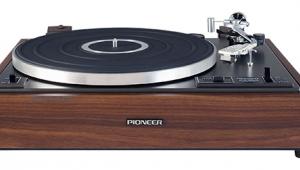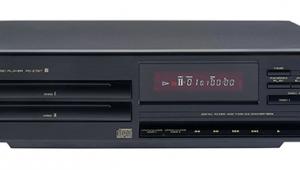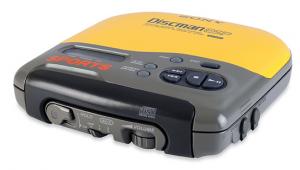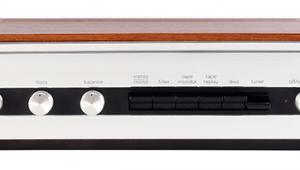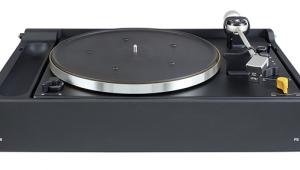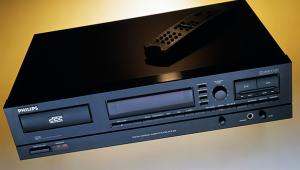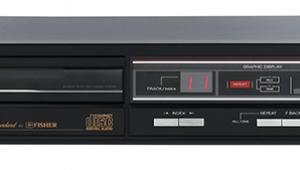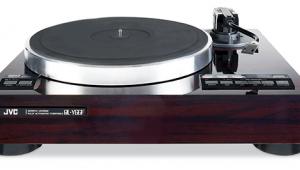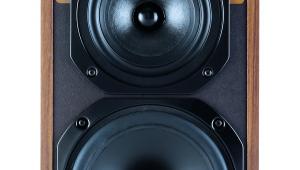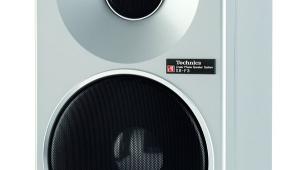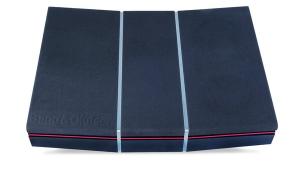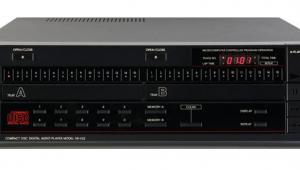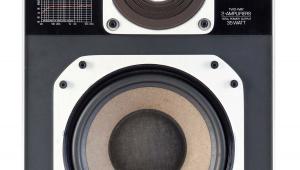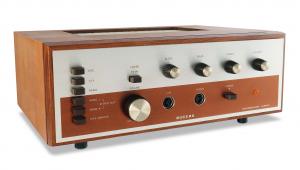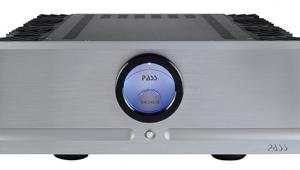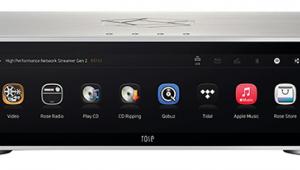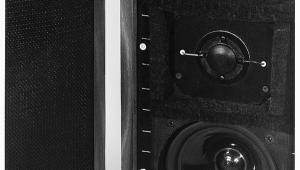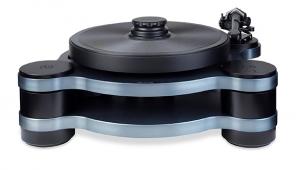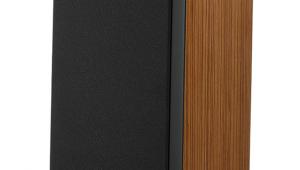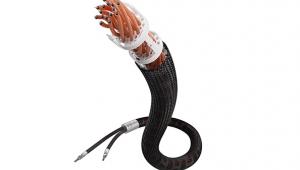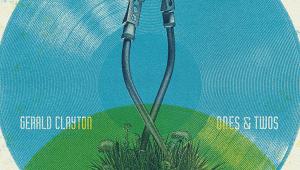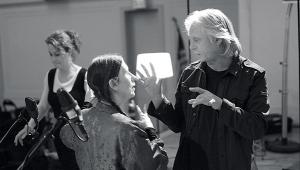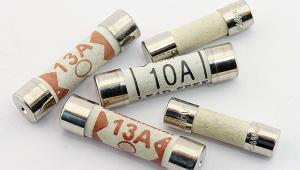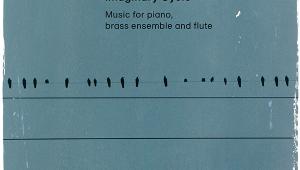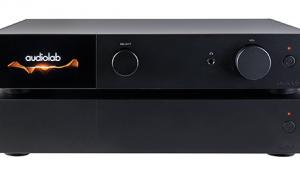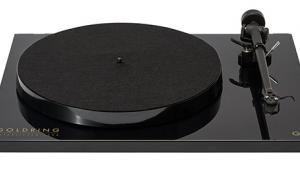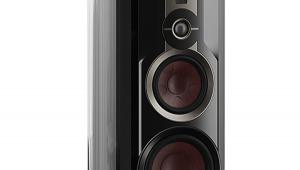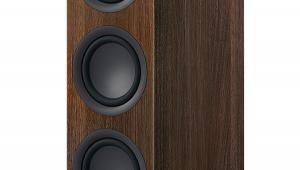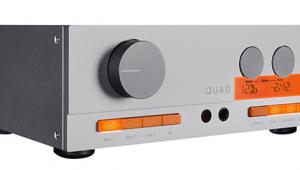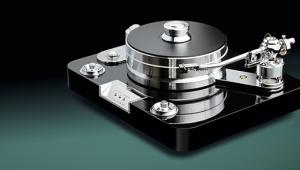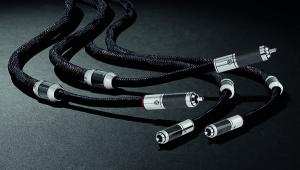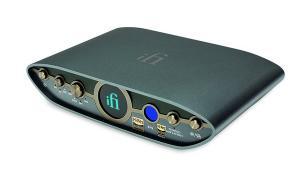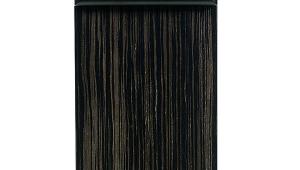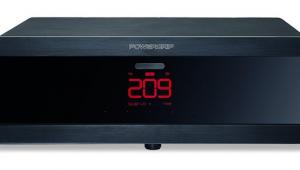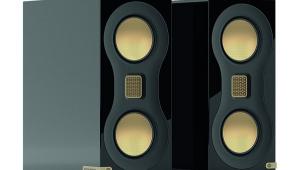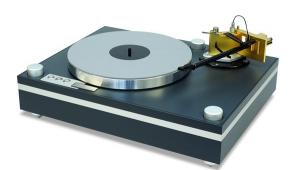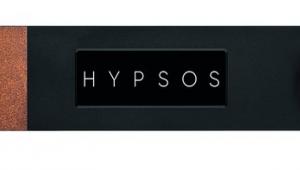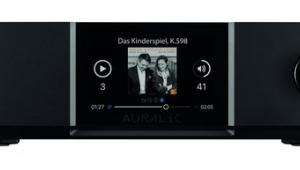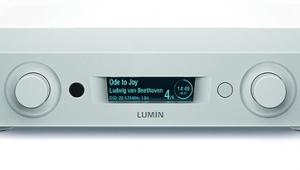Albarry DMP 1/M408 Series II amplifiers
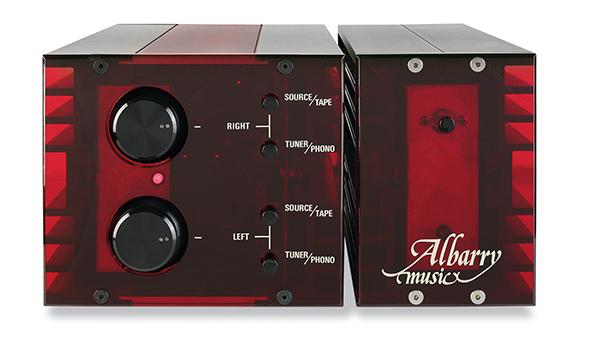

Whatever else can be said about Albarry Music’s amplifiers, they looked fantastic – products that proudly had their works on show, but done with consummate grace and restraint. The M408 was the first amplifier from Albarry, one of many boutique firms that sprang up in the early 1980s in reaction to the mass-produced ranges from Europe and Japan.
In total, Albarry’s amplifier system came as four units, the DMP 1 stereo preamplifier, the APS 1 outboard PSU and two M408 monoblock power amplifiers. They were all of matching size and style so could be attractively placed together on an equipment rack, though the M408s were often located close to the loudspeakers to reduce cable losses. The output power was rated at 40W/8ohm and 80W/4ohm, increasing to 50W/8ohm for the Series II model pictured here. The preamplifier was minimalist, its inputs confined to an MM/MC phono stage, and line inputs for a tuner and a tape loop which could be used for off-the-tape monitoring with a three-head machine. There were no tone controls or other filters, not that these were expected in this sector of the market.
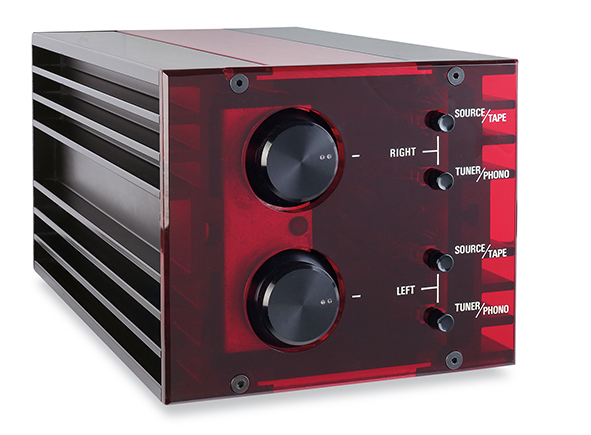
Above: Arguably less ‘famous’ than Albarry Music’s M408 power amplifier, the partnering DMP 1 preamplifier was, technically, the higher performing model
Although broadly conventional in its technical design, the M408 was equipped with an optically coupled output protection circuit. This had an electronic latching action which caused the amplifier to remain silent until either the power was cycled or the reset switch at the back was pressed. However, in practice, the Albarry arrangement did not actually disconnect the loudspeakers from the amplifier in the event of a problem being detected, so a speaker might still be damaged if one of the M408’s driver or output transistors failed. Present day Albarry owners should be aware of this...
Additionally, the M408, despite being DC-coupled throughout, had no facility to have its output nulled to zero under non-signal conditions, relying, instead, on the exact matching of its transistor pairs.
Far East influence
Albarry’s monoblock was designed with an extended (100kHz) frequency response [see PM's Lab Report], contrary to the likes of Naim, B&O, etc, which deliberately limited their amplifier’s HF bandwidth to combat distortion originating in the feedback loop. Albarry’s approach was more in line with Japanese practice, although implemented without the special high-speed transistors to which the big Far East names had access.
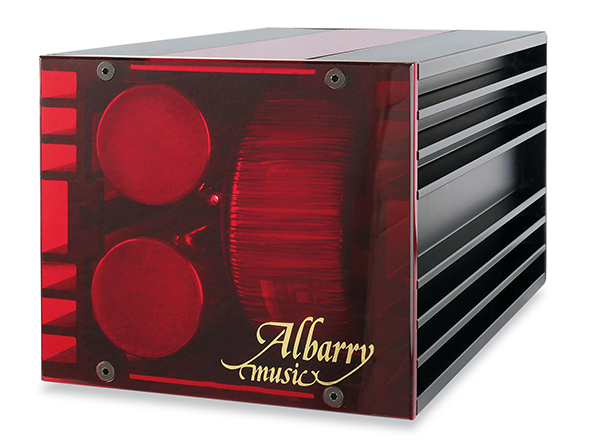
The M408 SII arrived in the late 1980s with a new preamplifier, this time with an internal mains transformer. This was called the AP2 and was more conventional in its form factor, although all the units retained the transparent red and black colour scheme. Priced £2700 in 1990, the pre/power package was up against the well regarded Audiolab 8000C/8000P, which offered double the power and many more facilities for about a third of the price.
Scarlet fever
Many specialist British amplifiers of this era appear either to have been styled as an afterthought or not at all. Not so the Albarry units, which are quite striking in their appearance. The casings are constructed largely from standard heatsink extrusions, but the use of tinted red acrylic for the front panels and red anodised inserts for the tops and bottoms of all the components (except the APS 1 PSU) break up what might have become an unappealing expanse of black.
They are big units too, dwarfing the arguably more elegant-looking Quad 33/303 [HFN Jul ’11] despite offering a similar power output and fewer facilities. There’s more than a suggestion of 1970s lava lamps and egg chairs here than the slim, ultra-slick 1980s style attempted by much of the competition. The preamp’s simple rotary controls serve to reinforce this impression, as does the absence of an auxiliary input for a CD player. Nevertheless, these amplifiers will never fail to attract attention.
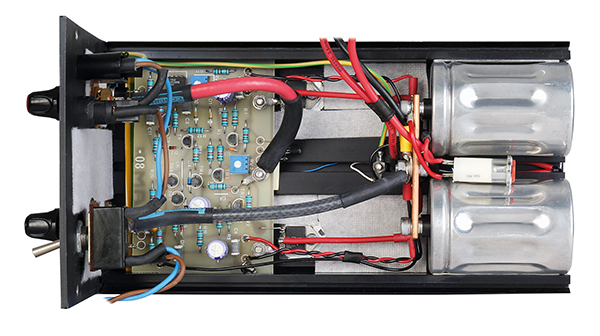
As ostensibly simple-looking as they are, they are also operationally untidy. Having to switch on three different things (two of which have their mains switches around the back) to power up a 50W amplifier is a nuisance; minimal internal fusing means that it would be sheer folly to leave any of them turned on unattended. A remote switching scheme would have been a help here.
The duplication of the source selector and volume controls for the two channels of the DMP 1 is also non-optimal, especially as the circuits are combined internally (eg, this is not a dual-mono design). The power amplifiers have a vivid neon indicator which lights up the space between the transformer and the two big reservoir capacitors when the units are on, but there is also a smaller red LED at the side of the fascia which shows that the protection system has been activated. This is unlabelled and not especially prominent, so you just have to know what it is for.
Made to match
There are just about enough inputs for a basic system and the sensitivities are well chosen, meaning that modern sources like CD players and DACs typically interface well with Albarry Music equipment. Features are basic though, with connections for only one pair of speakers and no provision for headphones.
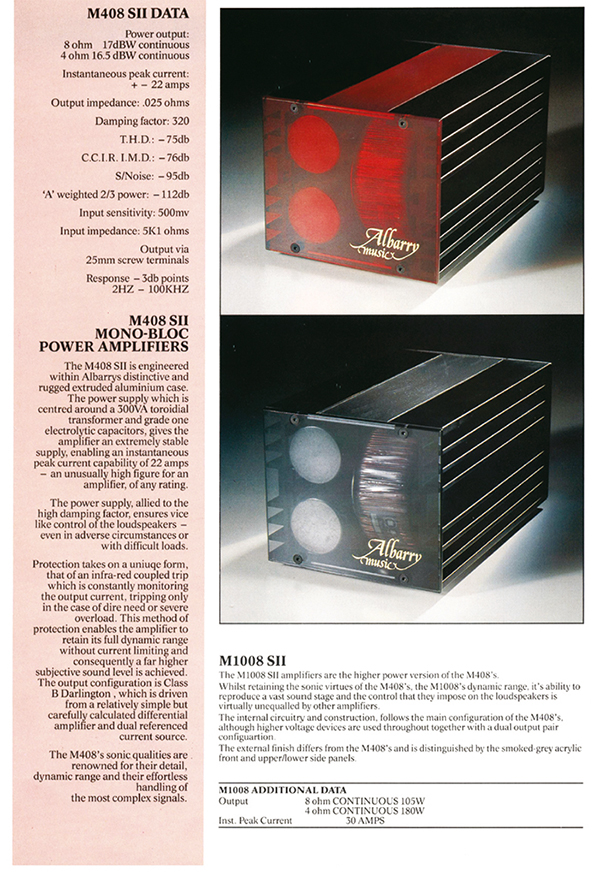
The low input impedance of the M408 SII is not a problem if it is used with the DMP 1 preamp, but might become an issue if models from other manufacturers are used. Albarry chose a figure of 5kohm, in contrast to the Japanese pre/power systems of this era which typically had the modern value of 47kohm. Equipment built to this standard may exhibit bass attenuation if used with the M408 SII.
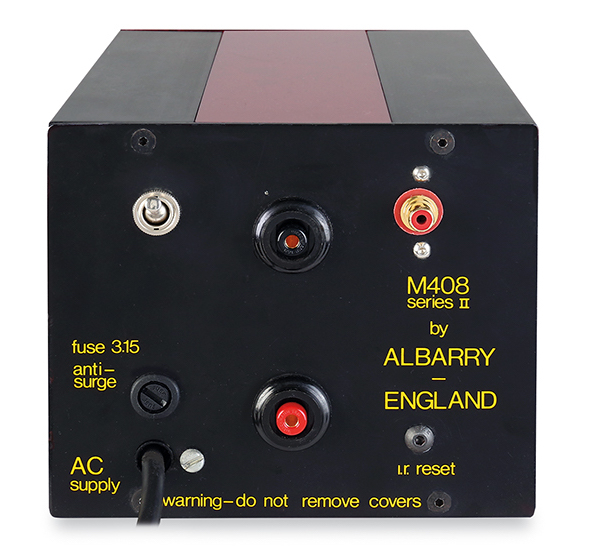
![]() Tim Listens
Tim Listens
The sound quality of the DMP 1/M408 SII combination is very much as one would expect from a specialist amplifier of this type. Its keynote is clarity in the midband, stretching down into the upper parts of the bass registers. Unlike some of its rivals the M408 SII is not stark and dry, instead it has a pleasing warmth about it which, at moderate levels at least, makes it an easy-going and relaxing listen. The basics are done right too, noise (both through the loudspeakers and from the units themselves) is well suppressed and not audible from the listening position when using line-level sources.
The action of the volume control is well scaled although I must add that there are few things I dislike more in hi-fi than separate left/right attenuators, especially those that require two hands to operate. And missing are the muting circuits that more developed pre/power combinations have, so you must get into the habit of turning preamplifier on first (and off last) to avoid ear splitting/loudspeaker-shredding pops and howls.
Noises off
This isn’t a bright sounding pre/power combination but the top end still makes its presence felt. At low listening levels there is plenty of detail, although I did become aware after some time that the silky smooth shimmer of the very best amplifiers was lacking. Things can also get messy at high listening levels, to a greater extent than you would expect from an expensive four-piece system. This may in part be due to the unusually high sensitivity of the M408 SII to RF interference, a foible noted in a review by (a younger!) Paul Miller in 1990, and which was emerging as an issue long before Wi-Fi and home networking. Now RFI is endemic.
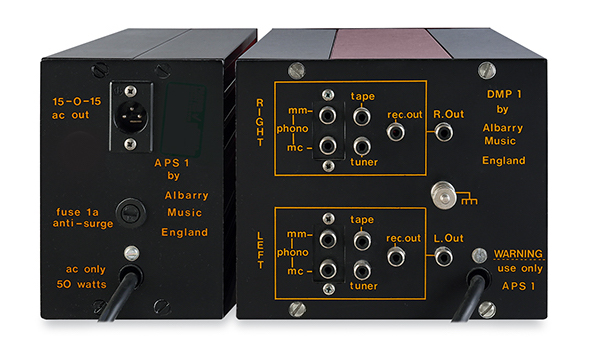
Above: Rear of the DMP 1 showing original nickel-plated RCAs for MM/MC, tuner, tape in and outputs plus a preamp output. A ±15V feed from its outboard PSU was carried over an XLR cable, something that could not happen today!
50W isn’t much from units of this size but it is enough to give Albarry’s M408 SII a ‘big amplifier’ sound. There is plenty of drive everywhere and DC coupling to the loudspeakers means that the bass is fast, punchy and tight if a little constrained compared to some rivals. Level 42’s ‘Dance On Heavy Weather’ [Standing In The Light; Polydor 813865-2] sounded vivid and full of detail, set against a widely spread soundstage. Percussion in particular gained an etched quality, well defined and well timed.
The DMP 1/M408 SII was less convincing with classical pieces. Its rough edges, inaudible or even beneficial with studio rock, took the edge off the necessary sense of refinement required for full enjoyment of a concert or an opera. Handel’s Silete venti [HWV 242, taken from Philips 434 920-2] with Sylvia McNair singing soprano, was still a pleasure to experience but the strings gained a steely quality and McNair’s vocals a hard edge, even at moderate levels.
Groovy, baby
In the end it’s difficult to come to a final judgement on these Albarry amplifiers. They do well with rock and pop, preserving the drama and impact of the original recording. With orchestral music they are less convincing. There is a lack of smoothness and final polish that one could gloss over with simpler, more affordable equipment but which is more difficult to brush aside at this elevated price level.
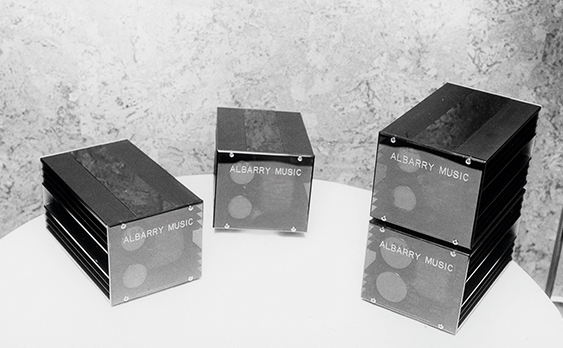
Above: Arguably less ‘famous’ than Albarry Music’s M408 power amplifier, the partnering DMP 1 preamplifier was, technically, the higher performing model
Against that the units look superb and if it weren’t for the ergonomic flaws they would be hard to dislike – equipment as attractive as this was rare from small British manufacturers in the 1980s. If you like rock and your listening room looks like something from an Austin Powers movie, then this system gets a definite recommendation. Otherwise, audition carefully first.
Buying secondhand
The M408, and M408 SII, were not big sellers but nevertheless remain available if you are dogged in your search. This is one of those units where buying fully working examples is essential – insist on a proper demonstration with suitable sources and loudspeakers at all power levels before committing. One reason for this is that the internal structure of all the units is such that access to both sides of the printed circuits is impossible without major dismantling and the de-soldering of many connections. Original service documentation is non-existent too.
These two things mean that even basic repairs will be time consuming and expensive. But in their favour, both units are reasonably simple and use standard parts for which modern replacements are still available.
Hi-Fi News Verdict
Albarry Music’s pre/power system looks so good that it almost wouldn’t matter if it didn’t work at all – these amplifiers are as much a design statement as they are a working piece of hi-fi. With these good looks comes a rather frugal selection of features, awkward controls and a few audible rough edges. But if you can live with those, and find samples in good working order, they are fine collector’s pieces.
Sound Quality: 75%
